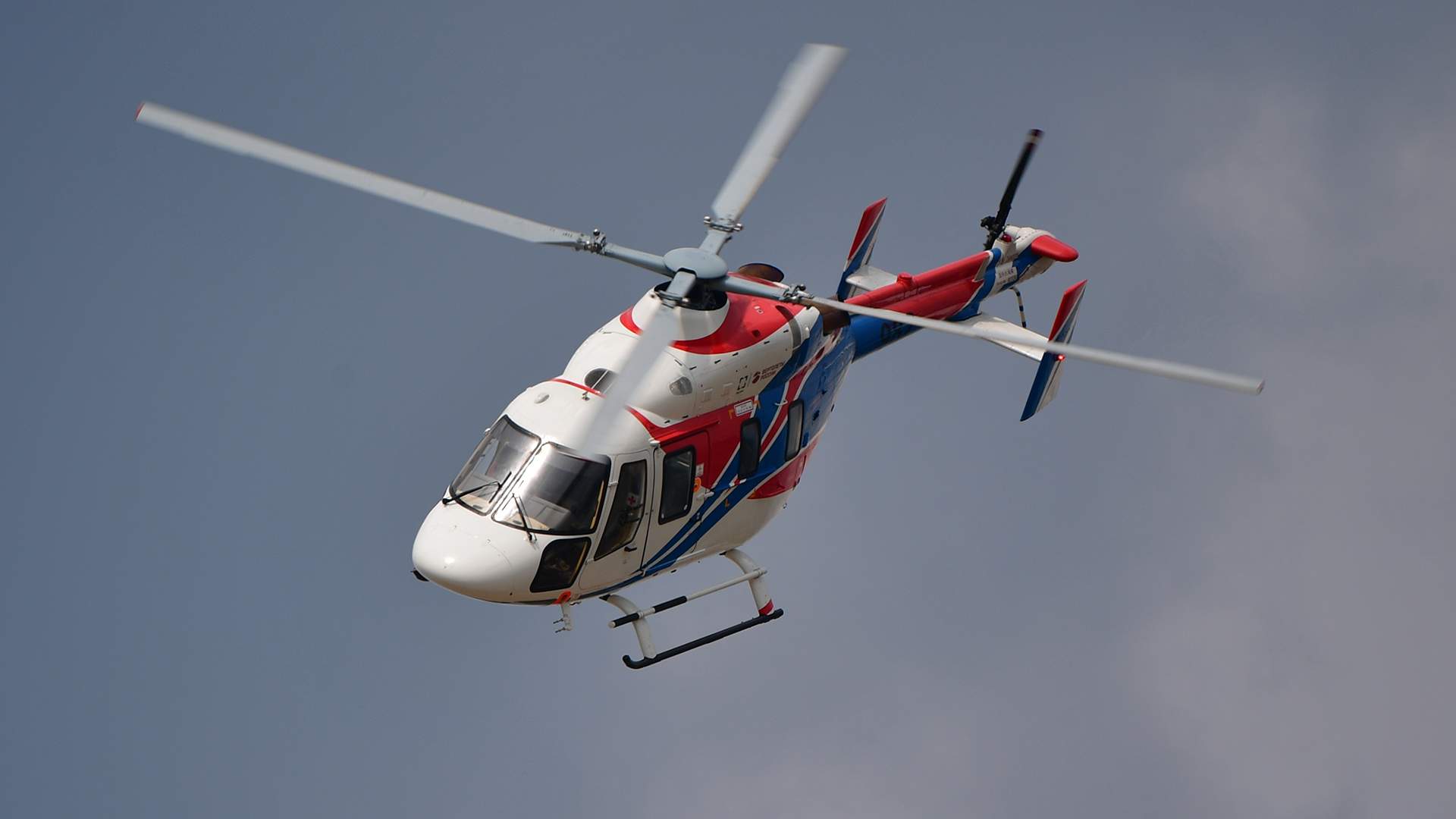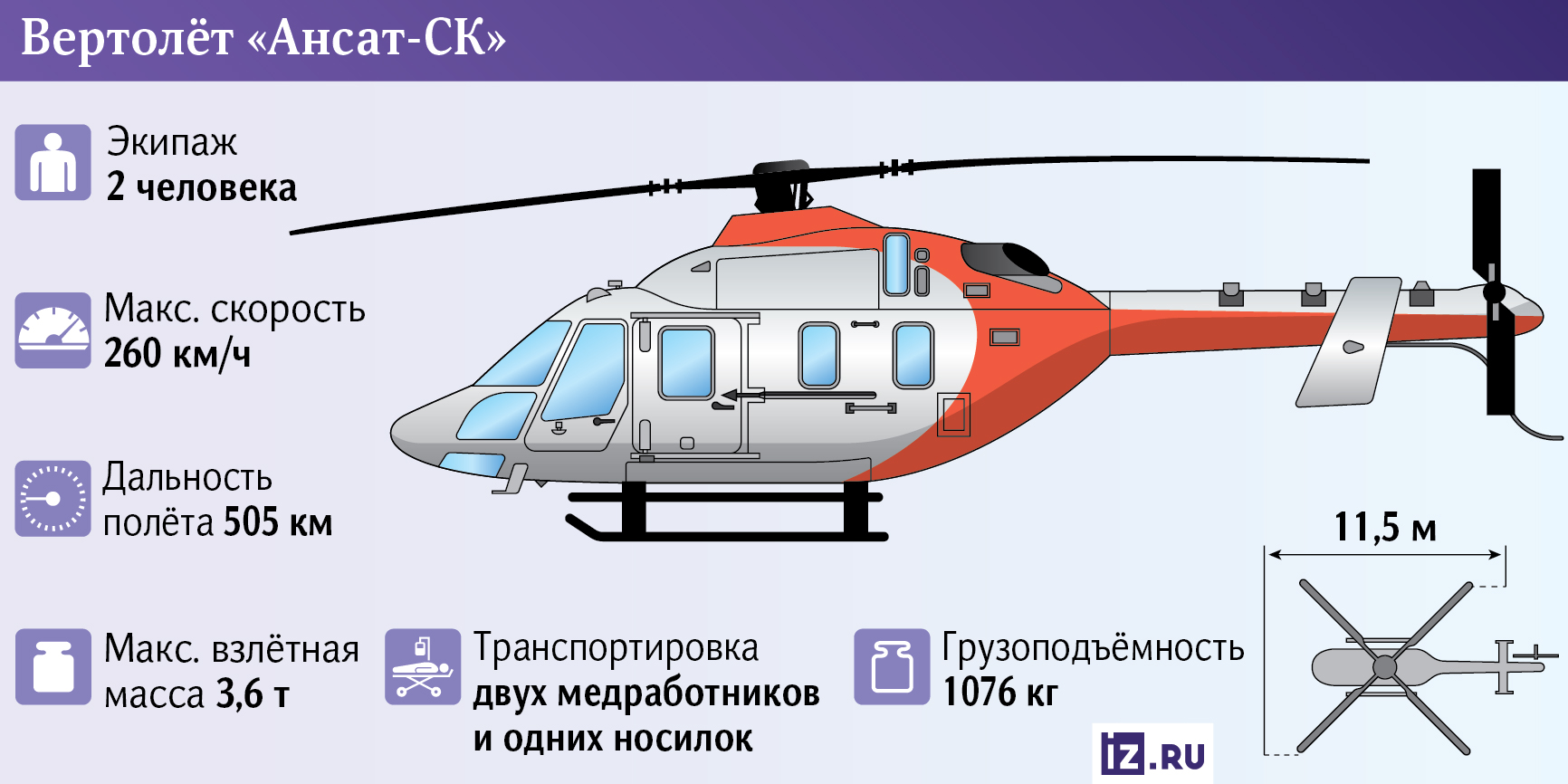Non-flying breed: Russian Ansat helicopters may face operational shutdown

Ansat helicopters are at risk of facing a large-scale shutdown, several industry sources told Izvestia. The reason is the inability to repair PW207K engines manufactured by Pratt & Whitney Canada. After reaching 3 thousand hours of service life, the operation of motors is prohibited and they must be sent for repair, but this is not possible now. The gradual retirement of helicopters will begin as early as this year — there are 49 such machines in total.
How many foreign parts are in Russian Ansats
In 2025, the life of the PW207K engines of Ansat helicopters begins to come to an end. According to the manufacturer, Pratt & Whitney Canada, the maximum service life of the motor is 3,000 hours, after which it must be checked and repaired if necessary. Without diagnostics and maintenance, it is impossible to extend the life and operation of machines.
However, as the Helicopter Industry Association (AVI) told Izvestia, there are no certified organizations with licenses in Russia or in friendly countries that could perform such work. Pratt & Whitney Canada refuses to service equipment due to sanctions, they added.
"The Russian industry does not have access to the original technical documentation of Pratt & Whitney Canada, which means it cannot organize certified engine maintenance,— the AVI added.
In addition, attempts to organize repairs at domestic enterprises are faced with the lack of critical components, the technologies of which remain inaccessible. And this creates a significant risk of operating the Ansatov fleet in the coming years, the association noted.
Therefore, in the next five years, a significant part of the Ansat helicopter fleet may be at risk of being stopped — 49 aircraft may stop flying by 2029, the AVI added.
As of July 2024, the total fleet of Ansat, Ansat-U and their modifications numbered 140 units, of which 88 helicopters were operated in civil aviation. According to the Federal Air Transport Agency on March 12, the Ansat operators are: the National Air Ambulance Service (NSSA) — 37 machines, Russian Helicopter Systems — 12 (possibly four more), AK Barguzin - three, AK Parma — two, Kostroma Aviation Enterprise — two, TPC — two, Aviaservice Airlines — one, HeliExpress — one.
According to one of the Ansat helicopters No. 33076 AK Parma (previously flown by Vyatkaavia Airlines, which had its operator's certificate revoked), the operating time approached 2,900 hours. With approximately the same flight time, there are three more helicopters in the Russian Federation, which will develop a motor resource in 2025.
An industry source told Izvestia that six helicopters could be used in 2026, 11 more in 2027, three in 2028, and 25 helicopters in 2029.
"The documented engine life of 3,000 hours can be extended twice for 500 hours," Oleg Kochkin, president of Vyatkaavia Airlines (currently engaged in maintenance), told Izvestia. — But legally, only the manufacturer has the right to do this. Its representatives come to the operator, check the engine and, after analyzing the condition of the turbine and blades, officially give permission for the extension of operation.
If the wear is high, then the power unit is replaced or repaired. There is only one factory in the world that carries out heavy forms of PW207K repairs, and it is located in the USA, Oleg Kochkin noted.
According to him, earlier there were attempts to involve the Ural Civil Aviation Plant in the repair of PW207K, but so far to no avail.
According to the Helicopter Industry Association, the difficulties in ensuring the airworthiness of Ansat helicopters are associated not only with PW207K engines, but also with other technical components and assemblies. As told to Izvestia in AVI, there are two dozen critically important products in the Ansat design, including the French flexible control rods (Push-Pull) Triumph Controls France and SEMA actuators from Safran Electronics & Defense. The helicopters are equipped with Czech PBS starter generators from Velká Bíteš or American Skurka Aerospace Inc. Without them, it is impossible to ensure the operability of the helicopter's electrics, the association noted.
The resource of the nodes is limited and it will require either the purchase of original components or a deep redesign of the helicopter design to install Russian analogues.
"Thus, even if the issue with the engines could be resolved, other imported components would continue to limit the airworthiness of the Ansat," the AVI noted.
Leasing companies that have leased Ansats may face the risk of returning machines that have no further prospects for operation, said one of Izvestia's sources in the industry. At the moment, these are the State Transport Leasing Company and PSB Leasing.
When will the import-substituted Ansat be put into operation?
As soon as Pratt & Whitney Canada stopped supporting operational engines, the Russian authorities approved an import substitution project for critical Ansat units.
As the press service of the United Engine Corporation (UEC, part of Rostec State Corporation) told Izvestia, instead of the PW207K, the designers of UEC-Klimov created a domestic VK-650V engine. In 2023, its engineering tests were successfully completed, and in 2024, testing began as part of the Ansat helicopter.
— In February 2025, UEC received a type certificate for the VK-650V aircraft engine for light helicopters. Power plants of this class have not been produced in Russia before," the UEC press service said. — VK-650V is ready for mass production. Preparations are underway for the first flight of a helicopter with new engines.
VK-650V is the first Russian helicopter engine in the 650-750 hp power class. The power plant will replace foreign engines on Ansat and Ka—226T helicopters, and will also be used in other helicopters with a take-off weight of up to 4 tons.
AVI noted that the domestic engine required the development of a new version of the helicopter with systems that have different dimensions and weight. In fact, the import-substituted Ansat is a new version of the helicopter. It requires new flight tests and certification procedures, which significantly increases the commissioning time of the import-substituted Ansat. Certification of Ansat with VK-650V engine may last until 2026. However, serial production and deliveries will take an additional one to two years, air equipment operators predict.
Izvestia sent inquiries to the Ministry of Industry and Trade, the Ministry of Transport, the Federal Air Transport Agency, Rostec, Russian Helicopters, Ural Civil Aviation Plant, as well as airlines.
Is it possible to replace Canadian engines with Russian ones
"Extending the service life without the participation of the original engine developer carries additional flight safety risks," Andrey Patrakov, founder of the RunAvia flight safety and certification service, told Izvestia. — Replacement of spare parts (for example, turbine blades) with non-original ones will require certification of a design change, and it is almost impossible to do this safely without the original developer.
It is extremely difficult to buy foreign engines and spare parts in gray, bypassing sanctions, since Ansats are not widespread in the world and many of their technical solutions are unique and were produced individually specifically for Russian helicopters, the AVI noted.
Approximately the same situation is observed with Superjet-100 aircraft, which are equipped with Russian-French SaM146 engines and many imported parts for them were produced abroad in small batches specifically for this airliner. With the imposition of sanctions on these categories of spare parts, the aircraft has become the most vulnerable, Andrei Patrakov noted. Therefore, a new domestic PD-8 engine was also developed for the Superjet-100.
"We need to look for an opportunity to carry out repairs in third countries, but this involves high risks and costs," Oleg Panteleev, executive director of the Aviport agency, told Izvestia.
Installing Russian VK-650V engines to replace the Canadian PW207K engines that have served their time is technically difficult, he added. When forming the appearance of this engine, it was assumed that the remotorization of previously produced helicopters would be possible, but the question of the economic feasibility of such work remains open, the aviation expert noted.

— It is impractical to install new Russian engines on already flying cars. We will have to change the design of the helicopter, send them to the factory, which is not cheap. It is easier for airlines to take a new import—substituted Ansat when it appears," Oleg Kochkin added.
According to AVI, the remotorization of helicopters that have already been released is possible, but it will require a redesign of the fuel supply system, changes in fire protection, modifications to the aircraft electrical system, replacement of automatic skewers and related equipment.
The manufacturer, Kazan Helicopter Plant JSC, does not plan to carry out the remotorization of the existing fleet, as this would require a large—scale reconfiguration and recertification of the machine, the association added.
Переведено сервисом «Яндекс Переводчик»









